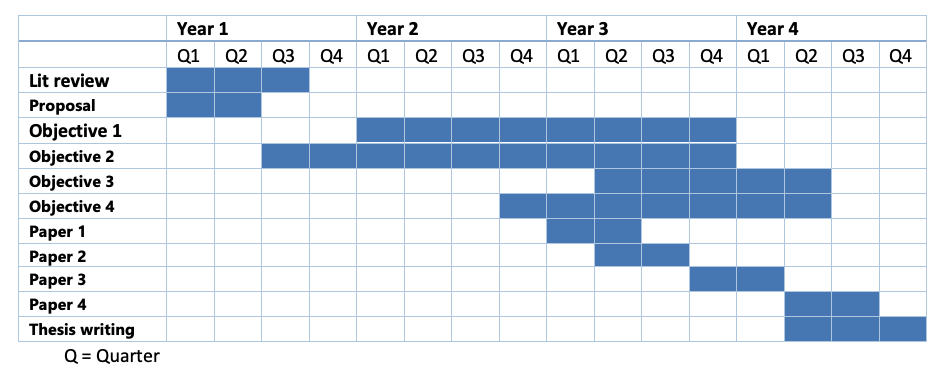Eleanor
Marshall

Project
Tags
Promotor
Marion Koopmans
Co-promoter(s)
Jeroen Kortekaas, Barry Rockx
Institute(s)
Erasmus MC
Description PhD project
Many arboviruses are known to cause severe neurological disease in humans, impacting millions of people worldwide and often resulting in with long-lasting, debilitating sequalae in surviving patients. Yet still, relatively little is known about the exact mechanisms by which they gain access to the human central nervous system. Our goal is to use model systems developed in this PhD project to discern the neuroinvasive mechanisms employed by emerging arboviruses, in order to identify potential therapeutic or vaccine targets to prevent neuroinvasive disease. To move towards this goal, our objectives include initial elucidation of the neuroinvasive mechanisms employed by priority neurotropic arboviruses using a range of in vitro and in vivo approaches, and concurrent development of an in vitro model system that can be used to rapidly identify the capacity for neuroinvasion/virulence of newly emerging virus X.
Research questions / objectives
- Identify the ability of arboviruses to utilize haematogenous routes of neuroinvasion.
- Identify the ability of arboviruses to utilize transneural routes of neuroinvasion.
- Determine the effect of arboviral infection on neuronal viability and function.
- Disentangle the spatial/temporal kinetics of in vivo neuroinvasion and neuropathology by arboviruses using serial sacrifice studies.
Timeline

Tags matching with the contents of track 18
Methods
-
Labwork
- PCR: Virus detection in tissues and cell culture
- RNA/DNA extraction: I may be extracting RNA to determine viral presence in tissues.
- In vivo: I will do a lot of in vivo work to determine routes and spatio-temporal kinetics of neuroinvasion in rodents
- In vitro: I will develop in vitro models of neuroinvasion using primary cell co cultures
- Ex Vivo: I may use ex vivo brain tissue for viral infection experiments.
- Plaque Assay: I will use plaque or TCID50 assays to determine titres of virus in infection experiments.
- Living animal experiment: As above with in vivo: I will also do behavioural studies to see whether function of the brain is compromised, at what stage of infection and where the virus can be found in the brain.
Literature
- Literature review: I am currently writing a literature review on what is known about the neuroinvasive strategies used by arboviruses
Topics
-
Species:
- Human: We are most interested in the ability of a virus to induce neurological disease in humans, therefore will use primary human tissue as much as possible.
- Bird: Experimental infection in birds in collab. with Gianfillipo
Species
-
Species:
- Human: I will work on health education and promotion with students to raise awareness for arboviruses and virus prevention and preparedness.
- Mosquito: I will work on mosquito surveillance.
Virus
-
Virus:
- Virus (general): We will carry out experiments on the priority arboviruses as decided by the OHPACT consortium. Currently the main viruses we wish to study are highlighted below
- West Nile virus: A well-studied virus with regards to neuroinvasion, due to the large burden of neurological disease it causes in humans, but many questions remain. This virus co-circulates with Usutu and the geographical range is ever expanding. WNV has been implicated in using both haematogenous and transneural routes of neuroinvasion, therefore the spatio-temporal kinetics of this multipronged neuroinvasive strategy would be especially interesting to investigate.
- Usutu Virus: Usutu is a newly emerging virus which has been shown to induce neurological disease in both immunocompromised and immunocompetent individuals. Due to the low number of human cases, little research has been carried out on this virus so there is much to research.
- Japanese Encephalitis Virus: Despite two vaccines currently in use, outbreaks of severe neurological disease caused by JEV continue to occur. A large amount of literature exists on JEV, however some routes of neuroinvasion have not been explored e.g. via the blood-CSF barrier.
- Tick-Borne Encephalitis Virus: Occurrence of disease induced by TBEV is increasing due to the explosion of tick populations and increase in geographical range of these vectors. Interestingly, there are large differences in occurrence and severity of neurological disease between the three subtypes, with little knowledge as to the reason for this difference. In addition, the ability of this virus to infect via the alimentary route adds another layer of interest due to the recently discovered gut-brain neural circuit.
- Chikungunya Virus: Chikungunya virus, whilst most often associated with severe arthralgia, has been known to cause neurological disease. The choroid plexus appears to be an important interface for neuroinvasion by this virus, which is interesting due to the general lack of literature regarding this route.
- Mayaro Virus: Very little literature exists on the ability of Mayaro virus to invade the human CNS. There are therefore many questions to be answered regarding the potential of Mayaro virus to induce neurological disease, and a comparison to be made with related alphaviruses.
- Rift Valley Fever Virus: In severe cases of RVFV, neurological disease does occur, in addition to the haemorrhagic presentations. Research regarding neuroinvasion of RVFV often focuses on the olfactory route of neuroinvasion due to the ability of the virus to be spread via aerosol, as well as via the bite of a mosquito. Further study into the impact on neuroinvasion of these differing routes must be done. Microhaemorrgaging and immune cell infiltration of the brain has also been reported, therefore haematogenous routes of neuroinvasion should be further investigated.